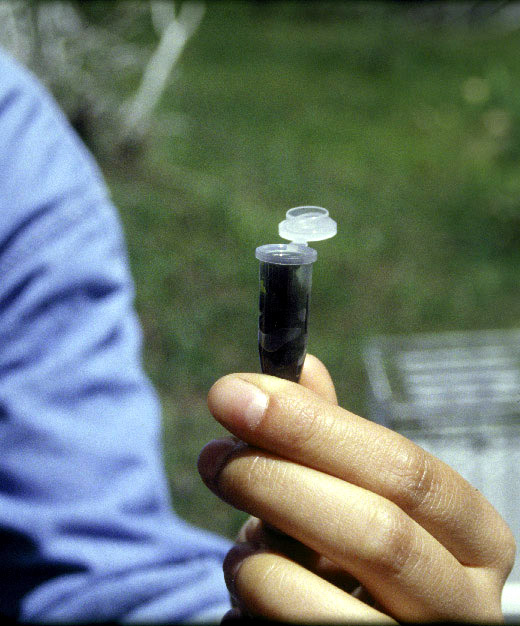

Home
Research Interests
CV & Publications
Teaching
Lab Members
Field Research
Research in the News
Prospective Students
Prospective Field Assistants
Links
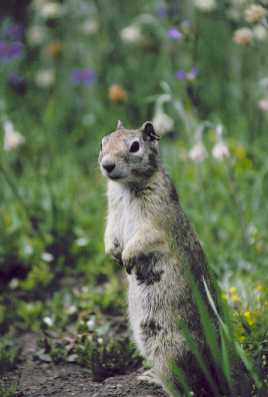
Captive juveniles, which were born and reared in the laboratory
at SNARL and subsequently housed in outdoor enclosures, were more responsive
to playbacks and remained alert longer than juveniles born and reared in
the field. Manipulations of foraging pressure, population density, and post-emergent
visual and auditory environments failed to replicate these response differences.
However, emergent experiences before natal emergence (including differential
auditory, visual and tactile stimulation) significantly affected later responses
to playbacks, with captive-born juveniles more responsive than field-born
juveniles even if they had identical post-emergent experiences. The selective
advantage of this experiential priming is rapid development of appropriate
responses and thus an increased chance of escaping from predators shortly
after emergence, when juveniles are most susceptible to predation.
Finally, to optimize foraging and vigilance efforts, we would expect animals
to adjust their behavior according to the current intensity of predation
and the hunting styles of local predators. I conditioned animals to respond
to a neutral conspecific vocalization as if it warned of an aerial predator,
indicating that ground squirrels' response repertoires are indeed modifiable
through experience. I recently extended these findings by showing that na´ve
animals can learn new associations between calls and appropriate responses
indirectly, by observing 'knowledgeable' squirrels. Natural selection would
favor flexible responses if it allowed juveniles, or prey at any age, to
develop antipredator behaviors that are appropriate for the local predator
environment. Cultural transmission of response styles may be a safer way
of learning appropriate responses than trial-and-error learning.
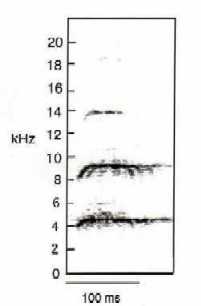
Spectrogram of a whistle alarm call, typically given to aerial predators
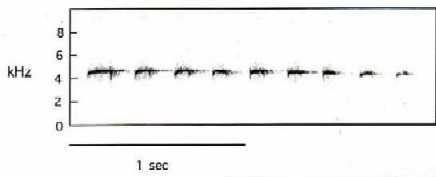
Spectrogram of a trill alarm call, typically
given to
terrestrial predators
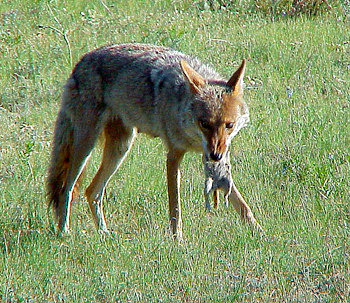
My long-term research interests emphasize the ecological correlates of sociality and the development of adaptations. In particular, I will explore how a species' physical environment (including its habitat features, predators and circannual rhythms) interacts with its social environment (such as the degree of coloniality, duration of maternal dependence during development and nature of social interactions with conspecifics) to generate adaptive behavior. I will use antipredator behavior as a bioassay of differential responses to physical and social environments. For example, habitat variation may result in response-repertoire differences within a species (e.g. due to variation in predator variety and numbers, openness of habitat). On the other hand, two sympatric species may differ in their response patterns despite similar predation threats if their alarm-call systems differ, if they exhibit different social systems or if they utilize different refuges.
I have recently developed an assay for non-invasive quantification
of corticosteroid levels in ground squirrels, by analyzing fecal metabolites.
With this measure I can examine population differences as a function of
overall levels of stress as well as short-term hormonal responses to stressors,
which have been shown to facilitate learning in some species. My preliminary
studies suggest that corticosterone levels correspond with peak periods
of learning of anti-predator behaviors by free-living juveniles, and that
population differences in the hormone vary with predation pressures.
